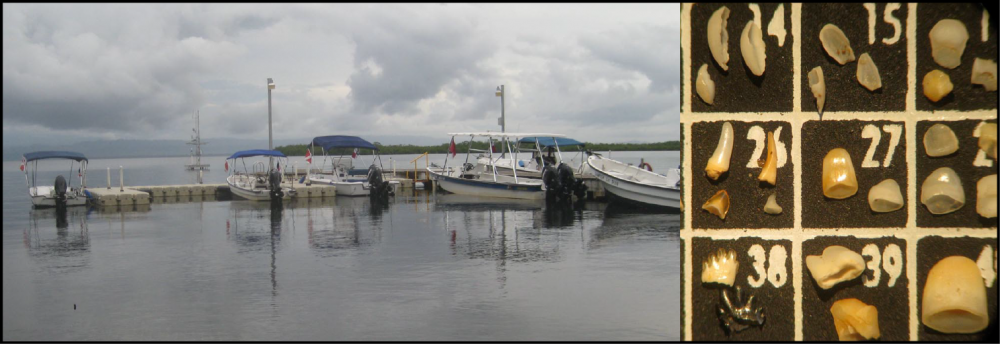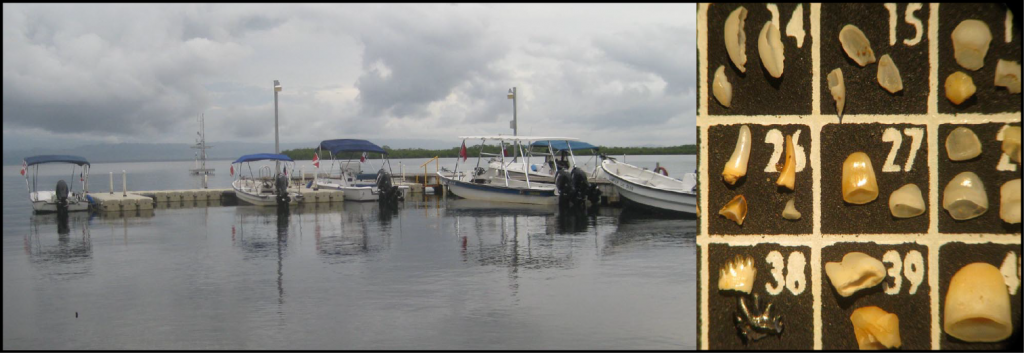
Reef fish teeth as indicators of pre-European fishing impacts in the Caribbean
Post doctoral student Katie Cramer and I are working with Smithsonian Tropical Research Institution scientist, Aaron O’Dea, to collect large-diameter sediment cores in reefs from Bocas del Toro, Panama and the Mesoamerican Reef in Belize. To this end, I built a vibracoring system to collect 5 m cores thorugh the last ~1000 years of reef sedimentation. Our goal is to determine the history of transformation of reefs over the last millenium as these ecosystems experienced increased human fishing pressure, land modification, and (since the 1920’s) agricultural runoff from banana plantations. We are using teeth and otoliths (ear bones) recovered from reef sediments to assess the population abundance and structure of reef fish populations. We collected 11 cores in January 2013 using the coring system, the longest of which was 5.5 m and then got another 17 cores from Belize in Jan-Feb. 2014.

